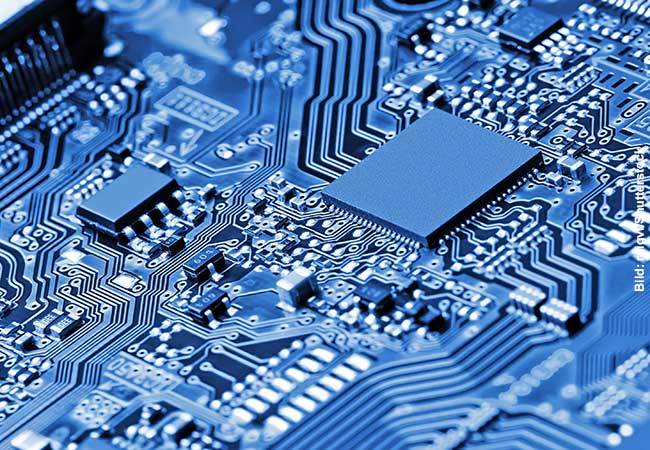ACADEMIA
Goethe University Frankfurt identifies materials that have fast properties for spintronics
While modern computers are already very fast, they also consume vast amounts of electricity. For some years now a new technology has been much talked about, which although it is still in its infancy could one day revolutionize computer technology – spintronics. The word is a portmanteau meaning “spin” and “electronics”, because with these components electrons no longer flow through computer chips, but the spin of the electrons serves as the information carrier. A team of researchers with staff from Goethe University Frankfurt has now identified materials that have surprisingly fast properties for spintronics. 
“You have to imagine the electron spins as if they were tiny magnetic needles which are attached to the atoms of a crystal lattice and which communicate with one another,” says Cornelius Krellner, Professor for Experimental Physics at Goethe University Frankfurt. How these magnetic needles react with one another fundamentally depends on the properties of the material. To date ferromagnetic materials have been examined in spintronics above all; with these materials – similarly to iron magnets – the magnetic needles prefer to point in one direction. In recent years, however, the focus has been placed on so-called antiferromagnets to a greater degree, because these materials are said to allow for even faster and more efficient switchability than other spintronic materials.
With antiferromagnetic, the neighboring magnetic needles always point in opposite directions. If an atomic magnetic needle is pushed in one direction, the neighboring needle turns to face in the opposite direction. This in turn causes the next but one neighbor to point in the same direction as the first needle again. “As this interplay takes place very quickly and with virtually no friction loss, it offers considerable potential for entirely new forms of electronic componentry,” explains Krellner.
Above all crystals with atoms from the group of rare earth are regarded as interesting candidates for spintronics as these comparatively heavy atoms have strong magnetic moments – chemists call the corresponding states of the electrons 4f orbitals. Among the rare-earth metals – some of which are neither rare nor expensive – are elements such as praseodymium and neodymium, which are also used in magnet technology. The research team has now studied seven materials with differing rare-earth atoms in total, from praseodymium to holmium.
The problem in the development of spintronic materials is that perfectly designed crystals are required for such components as the smallest discrepancies immediately hurt the overall magnetic order in the material. This is where the expertise in Frankfurt came into play. “The rare earth melts at about 1000 degrees Celsius, but the rhodium that is also needed for the crystal does not melt until about 2000 degrees Celsius,” says Krellner. “This is why customary crystallization methods do not function here.”
Instead, the scientists used hot indium as a solvent. The rare earth, as well as the rhodium and silicon that are required, dissolve in this at about 1500 degrees Celsius. The graphite crucible was kept at this temperature for about a week and then gently cooled. As a result, the desired crystals grew in the form of thin disks with an edge length of two to three millimeters. These were then studied by the team with the aid of X-rays produced on the Berlin synchrotron BESSY II and the Swiss Light Source of the Paul Scherrer Institute in Switzerland.
“The most important finding is that in the crystals which we have grown the rare-earth atoms react magnetically with one another very quickly and that the strength of these reactions can be specifically adjusted through the choice of atoms,” says Krellner. This opens up the path for further optimization – ultimately spintronics is still purely fundamental research and years away from the production of commercial components.
There are still a great many problems to be solved on the path to market maturity, however. Thus, the crystals – which are produced in blazing heat – only deliver convincing magnetic properties at temperatures of less than minus 170 degrees Celsius. “We suspect that the operating temperatures can be raised significantly by adding iron atoms or similar elements,” says Krellner. “But it remains to be seen whether the magnetic properties are then just as positive.” Thanks to the new results the researchers now have a better idea of where it makes sense to change parameters, however.
